
Target Asian Millennials (ages 25-35) through social media to increase brand awareness

Establish Wei Good Food as an authentic brand that emphasizes community building and being culturally significant

Market Research and Graphic Design

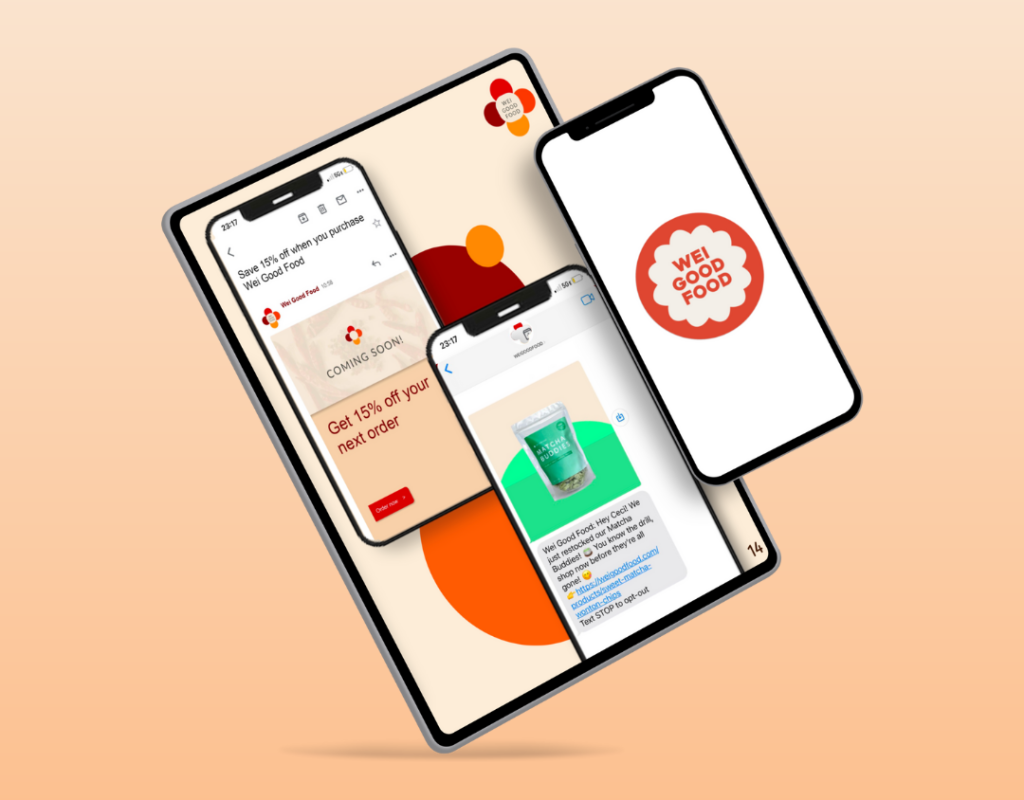
Wei Good Food was founded in May 2022 by Victor and Ziwei Li with the intent to combine Asian flavors with the feel of traditional American snacks. Their snacks can be found on social media, online shops, and pop up shops.
My team’s task was to conduct market research on competitor brands and offer social media marketing tactics and strategies for Wei Good Food to implement over a 3-month period.
Role: Market Researcher and Graphic Designer
Duration: 3 months, Oct 2022 – Dec 2022
Tools: Adobe Illustrator, Google Suite
My team was to create a 3-month business plan for Wei Good Food, outlining marketing solutions and creating a comprehensive timeline and budget breakdown.
We needed to analyze the competitor markets, conduct a SWOT analysis of the company, and take into consideration the current growth trajectory of the brand.
To determine the effectiveness of our solutions, we indicated specific KPIs that we would analyze throughout the 3-month period, allowing Wei Good Food to examine their growth over time.
At the end of the project, I, alongside 4 others, would present our business plan to the CEOs.
Early into the Covid-19 Pandemic, the snack market shrunk primarily due to limitations on the movement of goods and the closure of retail outlets. However, since people were forced to stay home for the majority of 2020 – 2021, snacking became a common habit among the younger generation.
New snacks emerged as a result of the growing demand for snacks, and people were not satisfied with the traditional kind. Consumers sought out nutritious, healthy snack options and many supported small businesses online, which were made popular due to the social media app Tiktok.
We determined the target market to be Asian American individuals of all genders between the ages of 21 and 30 in the greater Los Angeles area. This population consists of Millennials who are either entering the workforce for the first time or are in undergraduate or graduate school and have stable or disposable incomes to support their snacking habits.
Millennials remain the key age demographic for online commerce, as they spend more money online in a given year than any other age group.
Using statistics regarding Los Angeles county and the population of Asian Americans, we determined Wei Good Food’s market size.
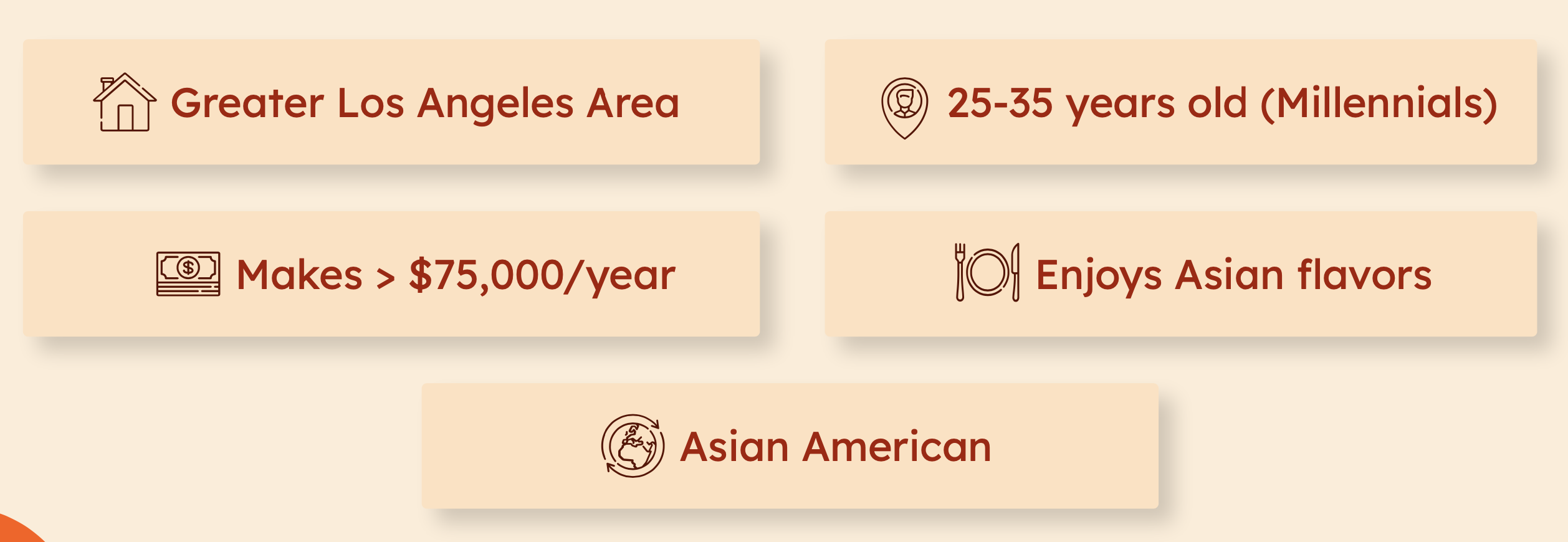
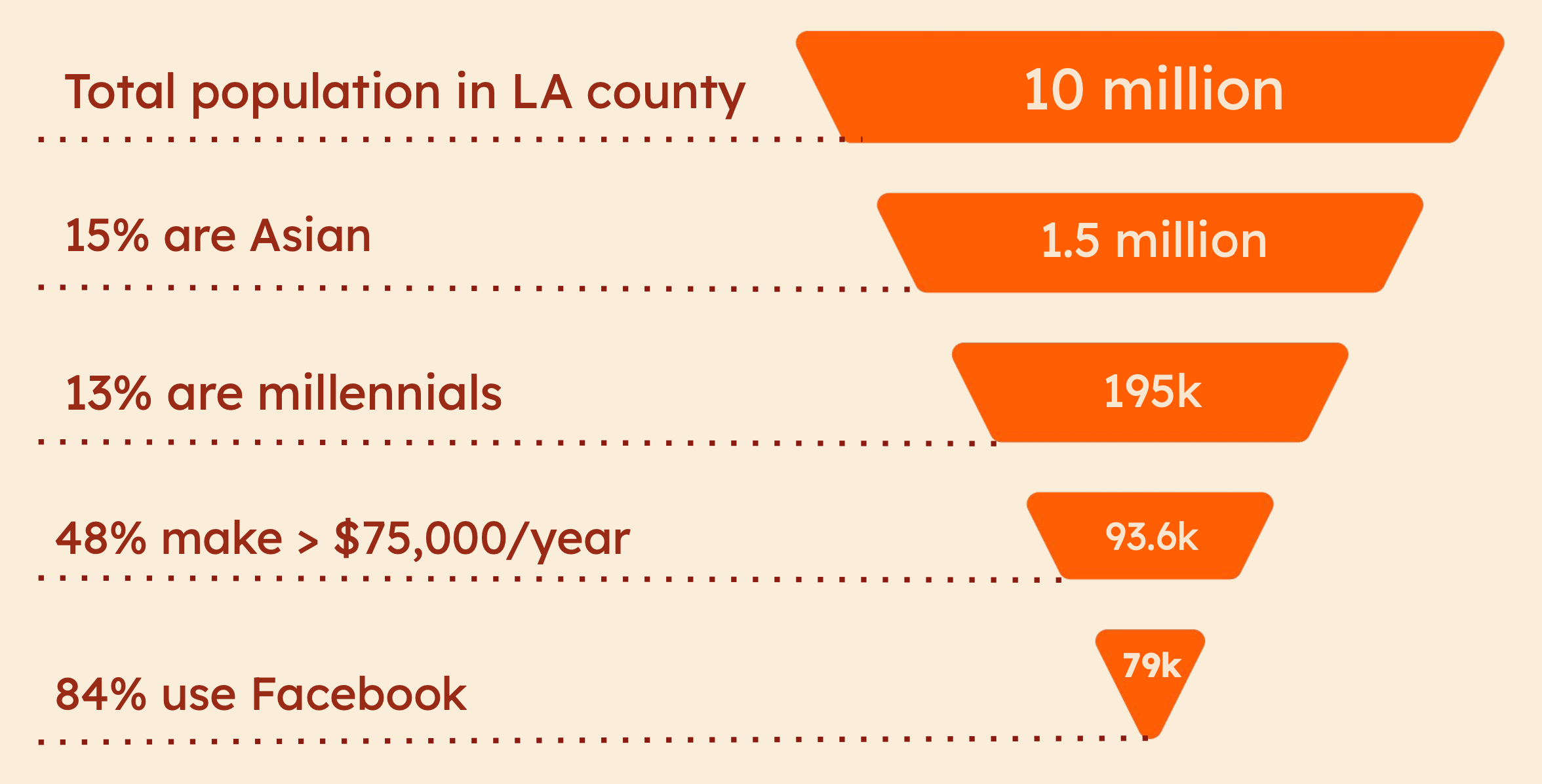
We were able to identify three main competitors for Wei Good Food: Chingoo Snack Mix, Loaf Language, and Rooted Fare. These competitors all share the same mission statement of multicultural celebration.
Rooted Fare’s story and mission is the most similar to Wei Good Food. The founders, Ashley Xie and Hedy Yu, founded Rooted Fare to make Chinese American pantry staples that evoke a feeling of nostalgia. They are both second-generation Chinese Americans who want to connect with their heritage.
With this in mind, it was important to distinguish Wei Good Food’s products, keeping them affordable but also profitable, and maintain the authentic message that could bring together the Asian American community.
Below is a chart detailing the features and advantages of each company in comparison to Wei Good Food.
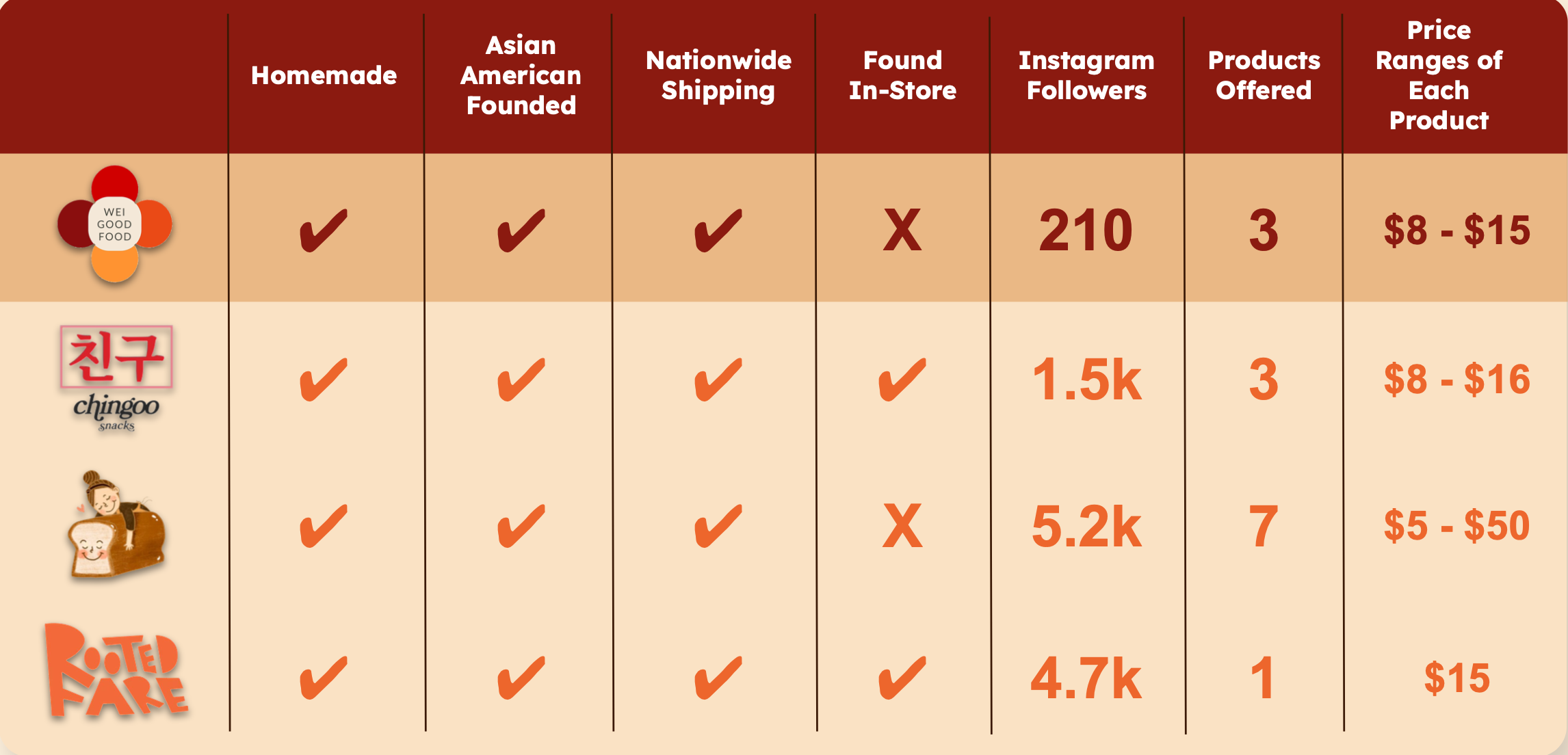
We then conducted a SWOT Analysis (strength, weakness, opportunities, threats) to understand Wei Good Food’s capabilities and constraints.
Wei Good Food had a strong forefront of authenticity and nostalgia, reflecting the cultural experiences of Asian Americans. However, they had a small team with limited time and resources to dedicate to marketing and production.
We took these factors into consideration when we began to draft our business plan and strategies.

We began brainstorming some marketing strategies for Wei Good Food to increase their social media outreach.
We created a positioning statement that would guide the trajectory of our solutions:
By providing a message that emphasizes the fusion flavors to the brand’s identity of coexisting across cultures, we can differentiate Wei Good Food as a modern but culturally aware company.
We planned to utilize Facebook, Instagram, and Tiktok to share content including the manufacturing process and behind the scenes to highlight the authenticity and dedication of a small team.
Here were our 3 marketing pillars:



We determined specific marketing tactics that Wei Good Food could utilize during the 3-month period.
Our first marketing initiative was a Lunar New Years Event. As a festival largely important to Asian cultures, we thought it would be a crucial event to represent.
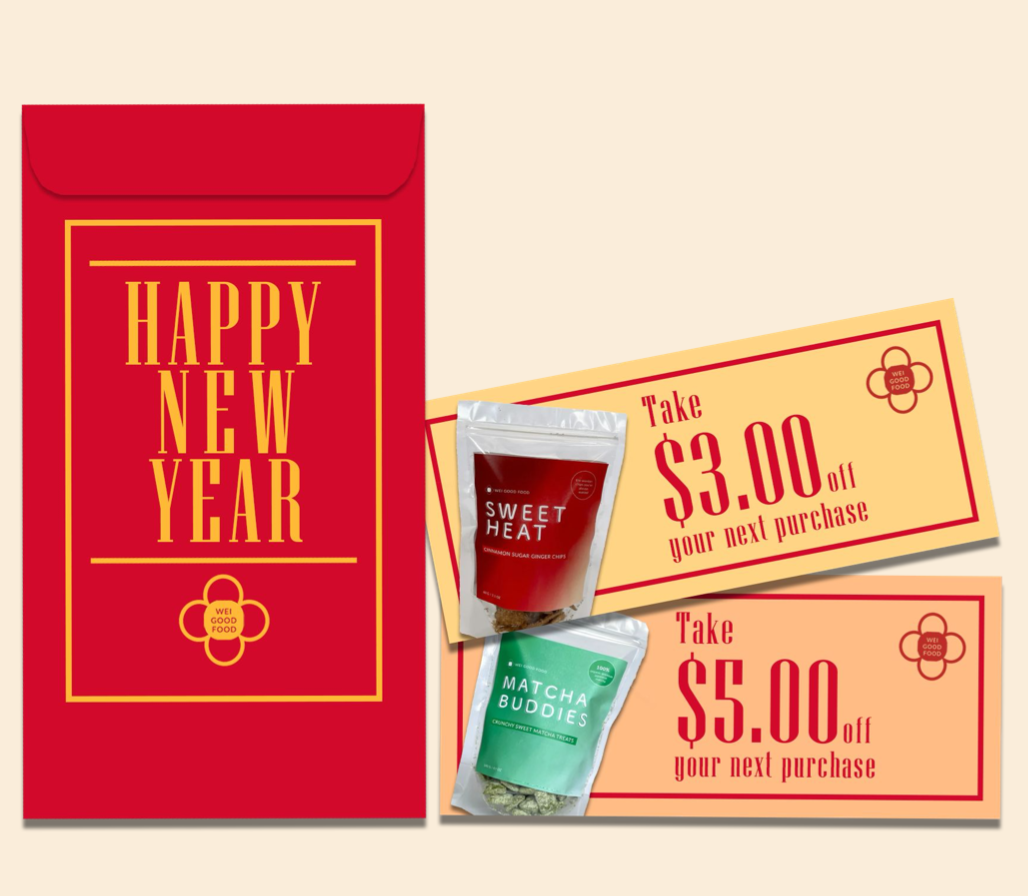
Our second marketing initiative was to create “Behind the Scenes” content showcasing Wei Good Foods’ products alongside the founders to create an emotional connection with the consumers.
We outlined 3 ideas that Wei Good Food could use as content:
Our third marketing initiative was to utilize email/SMS outreach and customer surveys.
Using an automated email and text platform known as Klaviyo, Wei Good Food could send personalized emails and texts to help educate, promote, and information about their snacks.
Key Takeaways:

Finally, we knew that Wei Good Food had a limited budget, and before we started creating our business plan, they were a 2-man team.
We created a media flowchart to give the founders a visual representation of when to implement each marketing strategy.
We knew that Wei Good Food consistently attends pop-up markets, so we included this in our chart for an overall look.
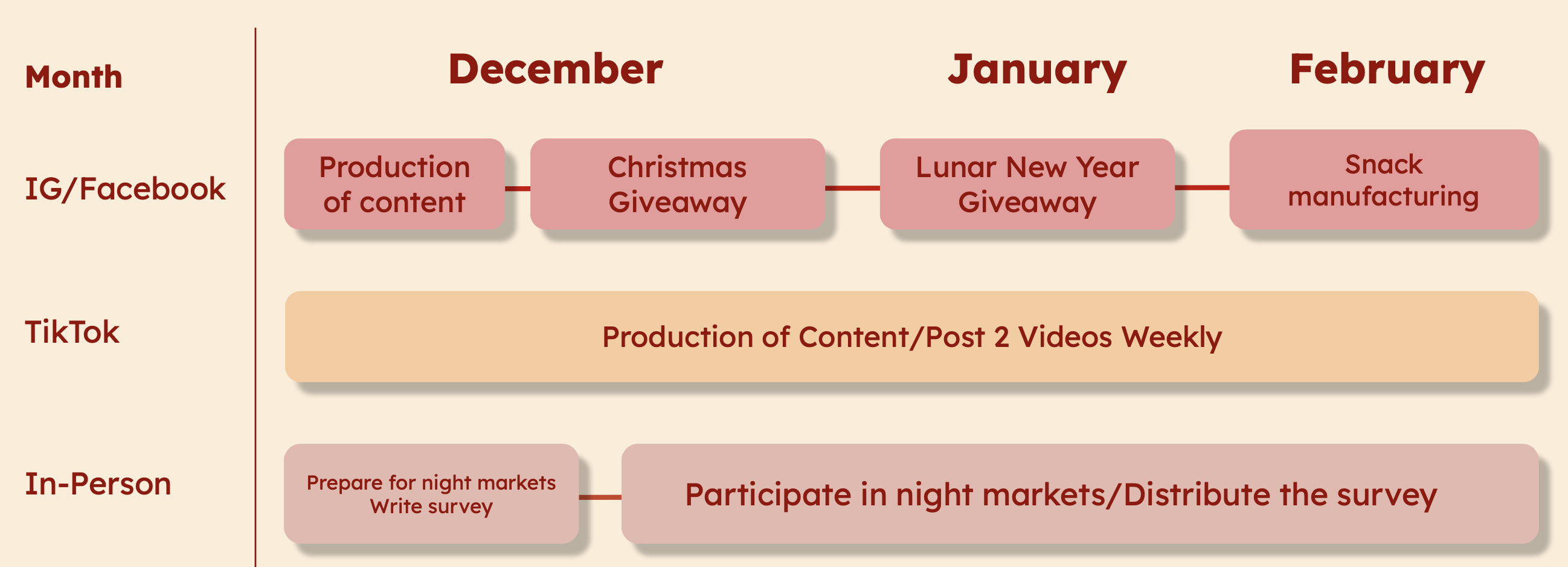
We also created a comprehensive budgeting chart outlining specific costs and percentages of the money allocated.
Wei Good Food’s budget at the time was $750, so we created a detailed pie chart with the breakdown of each social media initiative.
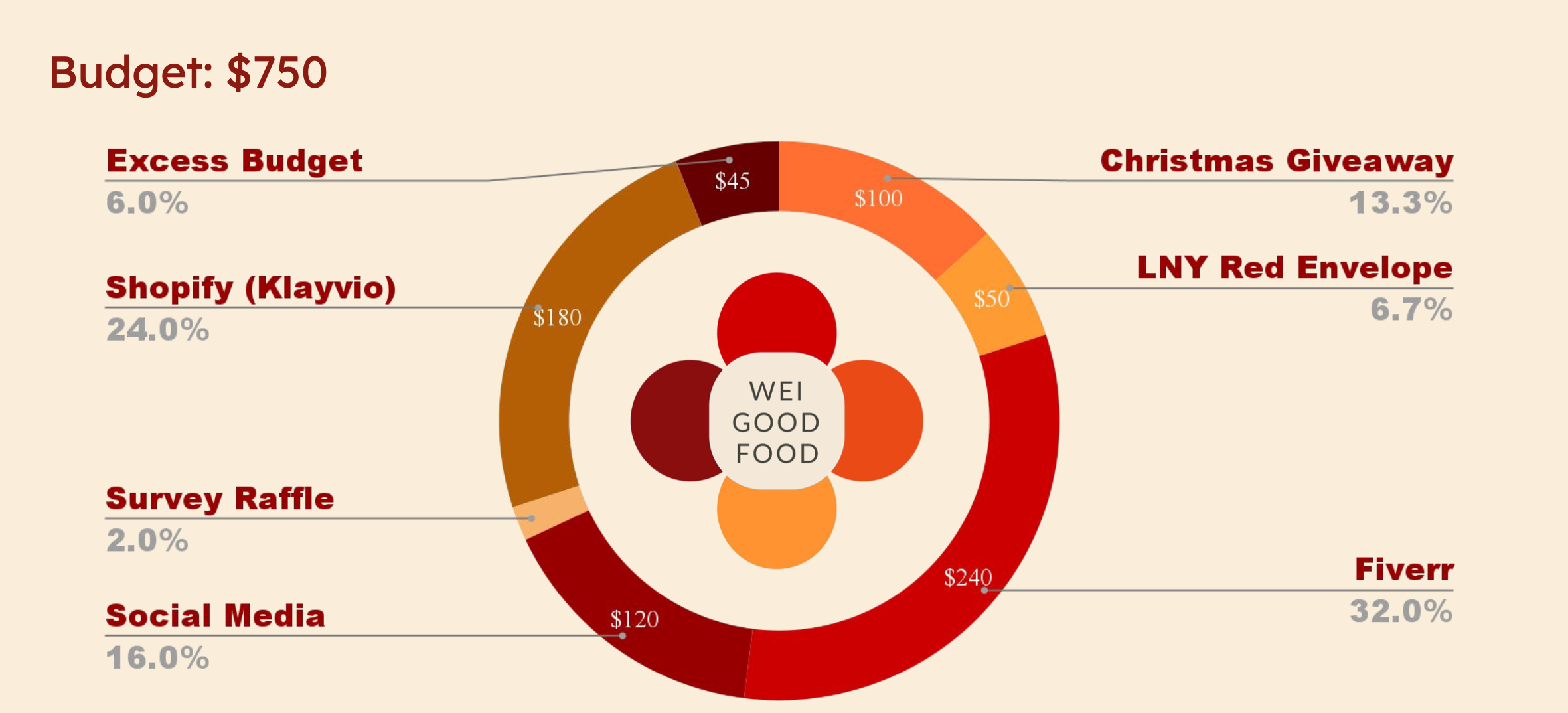
Through this project, I was able to learn how to conduct market research for a target audience, and also analyze competitors and company strengths.
Many of the skills learned are cross-functional, and I hope to apply them to future projects in both marketing and design.
Questions for future iterations: